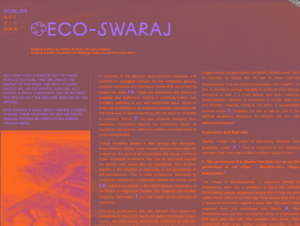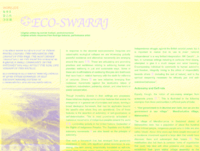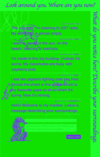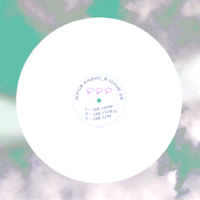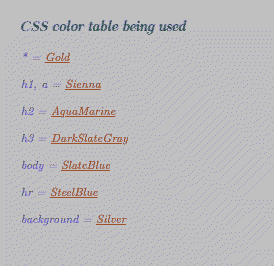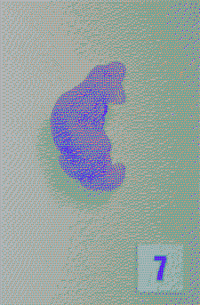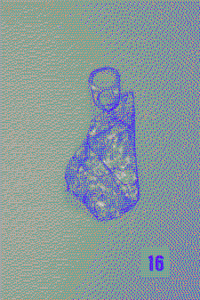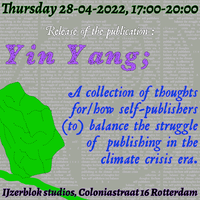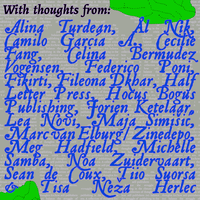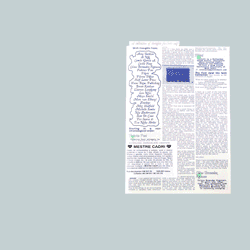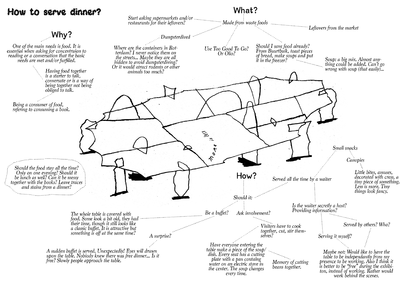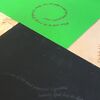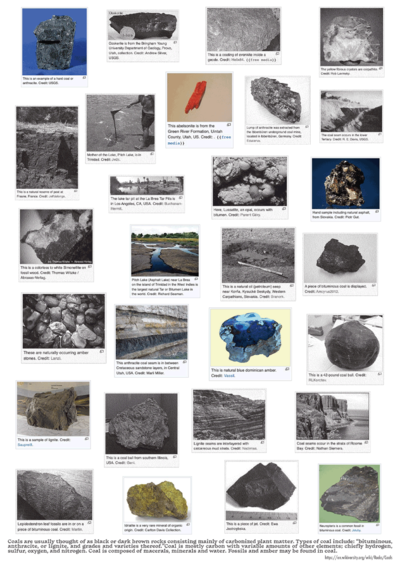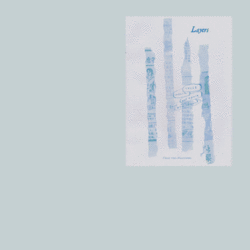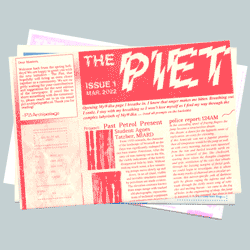User:Flo/Final presentation
Year 1
Special Issues
✶✶✶ 13: WOR(L)DS FOR THE FUTURE
An in depth overview on Issue 13 can be seen here.
My addition to the group work was mainly taking part in communication team and budget. For communication team it was focused more on external transmission but also internal communication came part of the deal.
For our first issue we republished 10 texts from the existing project "words for the future". Since we are 10 students, each of us had one of the texts. The text I republished was Eco-Swaraj from Ashish Kothari. Kothari introduces us to the word Eco-Swaraj by showcasing initiatives from India where people live in communities with their own eco based self-ruled system. These initiatives emerged in reaction to the global ecological collapse or due to more local socio-economical inequities. The word "Swaraj" could be translated as self-ruled decision making-system in local assemblies. This system wishes to bring more autonomy to communities and be independent from governments in favor of social collectives. Eco-swaraj adds these values to a personal and collective responsibility towards each others and towards the environment.
To republish this article I wanted to have an audience make a decision. In the webversion of the article, as seen on the right, were three options in different color schemes. With a page counter I recorded the most visited page. The print version of our re-publication was printed in the color with the highest count of visitors. The version with earthly colors was visited the most and was printed in the final publication.
You can see the PDFversion.
✶✶✶ 14: I Don't Know Where We're Going, But...
An in depth overview on Issue 14 can be seen here.
Setting up a local hotspot
Together with Federico and Camilo we worked as the technical team on setting up the hotspots with RPI's. Besides the interesting factor of making a fake wifi point, it was super helpful to understand how complicated it is to set things up for devices; there are so many different web browsers, type of phones, different screen sizes and other settings which you have to take into account.
Guestbooks
For issue 15 I've created a digital guestbook for every hotspot (5 in total). To create this I've worked with an existing php script and changed it how I would like it. To work with an existing script was helpful to understand the possibilities with php and to learn code in general.
Tic-80
For this issue we were learned to work with Tic-80. A game emulator on the basis of Lua. With this I worked on PPRGM. A small game where you can walk around in a colorful world to solve a riddle. To program this game I've looked at many existing games build with Tic-80. I've copied and reworked on existing games to understand it better. The storyline could be developed way better, but in the end I was happy to see that I understood how this language worked.
✶✶✶ 15: Radio Implicancies
An in depth overview on Issue 15 can be seen here.
For the cookbook broadcast a PDF was made. For this I made this page, showing different ways of materialising websites by calculating your carbon footprint in websites, who is the host and showing where the hosting server is located.
Annotating in HTML & CSS
In the second issue I started to combine annotations together with the use of HTML & CSS. This playful way of blogging process simultaneously trained basic skills of website making.
After tryouts with real life echo under a bridge & in a staircase, images to sound via Audacity and AI algorithms I've created three tracks. 1: Melodic song with SonicPi, using loops that looped in a different speed. 2: A satirical meditation soundscape with references to daily life encounters with "The Cloud" and another meditational audio piece referring to resources in computing and the periodic table of elements.
The research on "The Cloud" & elements in computing touched upon my interest in environmental issues. Amidst multi pandemics when studying partly resulted in an ever growing daily screentime. My daily encounter with computers for designing and communication made me question the hidden materiality of computing.
List of logs
Simple websites created to log research:
About loops created with Sonic Pi
Meditative audio about The Cloud
Meditative audio about the materiality and resources of computers
Year 2
Aquarium 2.0
These objects are considered trash, if you consider things on the ground as trash, if you consider broken things as trash. When nobody is taken responsibility of the object anymore, is it trash?
For Aquarium 2.0 we exhibited our projects in the window of De Buitenboel/ Het Bollenpandje in Delfshaven. I've chosen to exhibit object I've found over the years on the streets and in the soil. The objects were displayed in the windowsill on soil with a catalog describing each objects in materiality, place and extra information if there was any to it. Exhibiting the objects was a spontaneous choice, I wanted to have something screenless, material driven. To display these items with an catalog style flyer was an ironic act towards archiving and reveals for me the beauty and unique traits of each piece of trash. One of the responses I heard of a visitor of the venue said that she was not impressed, since she could find objects on the street herself too and display that.
Thesis: Fluorspar
Understanding the materiality and the invisible environmental impact of self-publishing
Should everything be measurable? When doing research on the materiality and environmental impact of publishing I've started with the mindset that I should investigate and find a way to reduce my carbon footprint in the things I produce.
Encountering a rabbit hole on what pollution could be I learned a lot reading and thinking about measuring principles. Do I want to find the best typeface that uses the least ink? Being aware of design choices that could reduce ink is important. Thinking about files and their sizes we send daily is important. Archiving is important, but unknowingly we all create big databases inside abstract square buildings called data centers we don't even know where they are situated with all our e-mails, social media platforms and the files stored in many clouds.
Open Call
Struggling myself with the impact created through publishing I wondered how other self-publishers think about their impact in creating. In a way it seems little how much is added through publishing on landfills, but with computing, paper and inks valuable resources are used to make things public.
The publication
Yin Yang: a collection of thoughts for/how self-publishers (to) balance the struggle of publishing in the climate crisis era
It took longer than expected to finalise the publication. This because of a multitude of reasons. I've worked with others work before, but this time it was a bit different. Overall the question was: Where do I draw the line?
- Different submission than I imagined: I wasn't sure if I should make a selection in what to publish. Are all these submitters self-publishers? What is a self-publisher even? This got me thinking in how far I should direct an open call. Thinking about transparency & community building I've decided to publish all submissions.
- Regretted the choice of name. Do I hurt others with taking this name from Chinese philosophy? This cultural appropriation made me think if I could and should change the name. I've did research on the symbol, which is found on many other places in the world. I've included this small research in the attachment in the publication.
- Different types of work: To reduce materials I wanted to change certain aspects but was not sure how to do this to not hurt anyone's work. For example: Poems need more space or detailed pictures need to be printed bigger. Should I treat every piece of text in the same way (with line height, spacing etc)? Should I treat all images in the same way (all the same size)?
- How far should I experiment in design to have a smaller environmental impact? The experimentation process also costs materials... This hesitation in which design choices influence the appearance of the publication made me start printing tests in a very late state, I've needed all submissions before I could know what to do with it.
- I was still waiting on submissions. There were a few persons I knew that were interested but doubting on what to send in. I've extended the deadline for them again and again. Two days before the publication went to the printing stage I received the last submission.
- Also, I wanted to direct the publication a bit more with having an interview about practical things with Half Letter Press. After transcribing the interview I waited to get approval, this took also more time than expected.
Release
For the release I've organized a small festive launch for the publication.
In the beginning I wanted to organize a big event. With aside the launch a bookshop and an exhibition. I didn't had a specific deadline for the launch, and I tried to have this possible at De Boog. Contact with them was a bit slow, by the time I needed to set on a location I've heard that the initial space was not available anymore. Because of this and to have less tasks in organizing I organized the event at my own atelier. It was a more informal event, more focussed on the publication. The launch was accompanied with a small table with publications from submittors, a selection of my archive partly with publications from submittors, a showcase of all the testprints for the publications and a dinner partly from leftover food. During the launch the publication was activated through a musical performance of Tisa Neža Herlec (also a submitter) & Urban Megušar.
Questioning questions
Together with Kendal and Camilo we organized a workshop to generate different questions as a group process around our research topics.
The outcome can be seen here
Design principles?
Does it need to be in color? →Do the images need color? →All of them? Could you reduce the fill of the image with dithering? →Could the images be a bit smaller? →Could you have smaller margins? →Does more text fit with two or more columns? →Could you make the gap between the columns smaller? →Could you make the line height smaller? →Could you choose a font that is more dense in width? →Would it still be readable with a smaller font size? →Could you choose for a thinner typeface? →Are there big titles that could be outlined in stead of filled? →Have you thought of printing double sided?
Sobremesa
The time spend after dinner at the table is the English translation of the spanish word "Sobremesa".
Through various forms of research the project Sobremesa came in to being. 1: research on "understanding the materiality and the invisible environmental impact of self-publishing" in the thesis, 2: publishing a collection of thoughts for/how self-publishers (to) balance the struggle of publishing in the climate crisis era and 3: gathering all contemplations from the previous to create an open communal space in the shape of a dining and reading table.
The end product, the table, serves as a publication itself. With traces of texts engraved on the surface. The focus in the whole project is on re-using and sharing materials. A thoughtful sobremesa is created by emphasizing on sharing publications, all the wood collected from trash en serving leftover food.
Instead of focussing more on publications on a display I shifted my mind towards a different setting by creating a space to gather and consume. Be it in books or a conversation. This collective approach resulted from the thought that I could make and display another/many publication, but when do we have time to read and talk about it?
At the moment I have a long list of books I started reading simultaneously, books I started to re-read multiple times because it took too long to even finish them, books I quickly skimmed to use for the thesis and books I haven't even opened.
Engravings
Engraved in the table are curled lines of texts, mostly questions. Partly taken from my thesis, partly thought of during engraving or asked in conversations.
The sentences:
- The books I like the most I treat the worst
- More is less?
- What could be the average lifespan of a book? Are you going to read that book another time?
- How many publications you own are catching dust at the moment on the bookshelves?
- In which ways could you consume a book? If you buy books and don't read them, are you then a consumerist?
- Should everything be archived?
- Is it because of trading, that humans can achieve eminent (technological) inventions?
- Isn't trade one of the most powerful capacities human kind has to distribute knowledge?
- Must the Epson printer be local too?
- Is our view on materials, thus their care getting more abstract because of advanced production technologies?
- Does the end justify the means?
Leaving traces
To combine all findings of last half a year, I'm currently working on a final publication touching more upon the Sobramesa table.
Draft: Layers
Guestbooks, interaction, stratum, communication
Wider syntax
Languages
When starting XPUB I was aware of the coding aspect inside the curriculum, however when we learned things such as creating a PDF through Python, flask and other non visual tools inside programming I questioned the possibilities for my own practice. Honestly, it took a while when I started understanding the use and possibilities of these tools. After trying out with various languages in coding, the search for a snippet of code became easier. Delving fora from sometimes 10 years a go helped me a lot in creating all the tryout websites and the guestbooks. Slowly starting to understand how different languages speak and speak together.
Languages encountered
HTML, CSS, Javascript, Python, PHP, API, Flask, Terminal, Lua (Tic 80) & Twine.
Sharing
Understanding Open Source principles
During my bachelors study, where the only lessons we had were in Indesign & Photoshop, creating a monopoly in design in comparison to the tools we learned during XPUB made me think about the big influences in the way how we use tools of designing itself. The hegemony of Adobe and other big corporations in the (design) world is worrisome if you think about understanding the tools we use and will develop in the future. If everything is standardized, how much creativity is left? Looking under the fixed parameters of certain programs made me aware of the possibilities in sharing codes, opening up the conversations on ownership. Knowing how things work is vital to create new structures if necessary.
PZI Archipelago
When I noticed a job opening for this student led collective I applied rapidly. Studying at an art academy to me is partly the study itself and partly the connections being made throughout fellow students. The lack of intertwined relations between all masters courses was a drive for me to join Archipelago.
The Piet
To create a bigger understanding on what is happening at al masters courses developed in the idea to create a physical Newspaper. At the moment we are busy creating the 4th issue!
Future
Developing the research. Extending my practice in sober web design. Advocating for smaller file sizes.

